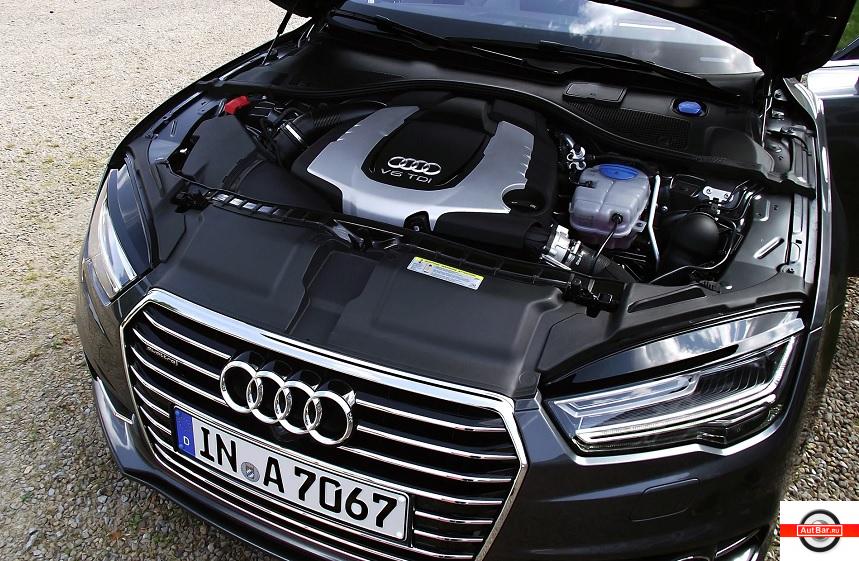
3.0 TFSi engine in the Audi A6 C6 and C7 - specifications and operation
Content
The 3.0 TFSi engine combines petrol direct injection and supercharging. It debuted in the C5 A6 in 2009, with the C6 and C7 versions being the most popular variants. It is recognized among drivers and is considered one of the most reliable engines of the German manufacturer in history. Find out more about 3.0 TFSi!
Basic information about the Audi engine
The 3.0 TFSi features an Eaton 24-valve turbocharger and Audi's proprietary TFSi technology. Common engine codes include CAKA, CAJA, CCBA, CMUA and CTXA.
Engine rotational power ranged from 268 to 349 hp. with a torque of 400-470 Nm. Such a large range was mainly due to different engine settings in individual models. The weakest model was used in A4, A5 and Q5, and the strongest in SQ5. The advantage of the 3.0 TFSi engine from Audi is that it has great tuning possibilities.
Specifications for C6 and C7 versions
The C6 model has been produced since 2009. The six-cylinder V-twin engine had an accurate displacement of 2996 cm3 and 24 valves per cylinder. Engine cylinder diameter 84,5 mm, piston stroke 89 mm. It has a compressor with an intercooler. The maximum torque was 420 Nm, and the compression ratio was 10. The engine was aggregated with a 6-speed gearbox.
In turn, the C7 model was distributed from 2010 to 2012. The exact working volume was 29995 cc. cm with 3 cylinders and 6 valves, as well as with direct injection of gasoline and supercharging. The 24kW @ 221Nm engine worked with a 440 speed gearbox.
Engine operation - what problems did you encounter during operation?
The most common problems with the 3.0 TFSi engine were faulty coils and spark plugs. The thermostat and water pump were also subject to premature wear. Drivers also complained about soot and excessive oil consumption.
Other complications include damage to the oil switch, crankcase ventilation valve, or engine mount. Despite these shortcomings, the 3.0 TFSi engine is still considered not very reliable. Let's find out how you can identify the three most common problems and solve them.
Coil and spark plug failure
These are common problems, but they can be dealt with fairly easily. First, you need to correctly diagnose the problem. These components need electricity to generate a spark in the combustion chamber in order to function properly. They take the voltage from the battery, convert it to a higher voltage and make the engine start without problems.
Because coils and spark plugs operate at high temperatures, they are at risk of damage. Their failure will be manifested by intermittent or complete lack of ignition, uneven idling, or the appearance of a CEL / MIL signal. In this situation, it needs to be replaced - usually every 60 or 80 thousand. km.
Thermostat and water pump
In the 3.0 TFSi engine, the thermostat and water pump may also fail. They are an important part of the cooling system, regulate the amount of fluid returned to the power unit, and are also cooled by a radiator before returning. The pump is responsible for the proper circulation of coolant from the radiator to the engine and vice versa.
Malfunctions are that the thermostat can jam and the pump leaks. As a result, the engine overheats due to improper coolant distribution. Problems with these components are standard occurrences in the operation of the drive unit.
Symptoms of a 3.0 TFSi engine malfunction
The most common signs of malfunctioning individual components are the appearance of a low coolant level indicator, engine overheating, visible coolant leaks, or a noticeable sweet smell from under the hood of the car. An effective solution would be to have the parts replaced by a professional mechanic.
Accumulation of coal
The first problem is present in most direct injection units, where the drug is sent directly to the cylinders and does not naturally clean the ports and valves. As a result, after about 60 thousand km, accumulation of dirt in the intake valves and channels is usually observed.
As a result, engine power drops sharply - soot clogs valves and prevents proper air flow. This most often occurs with motorcycles that are used for commuting when the engine is unable to burn the impurities.
How to deal with carbon accumulation?
The solution is regular replacement of spark plugs and ignition coils, use of quality fuel, frequent oil changes, and manual cleaning of intake valves. It is also worth burning the engine at high speeds for about 30 minutes.
Has the 3.0 TFSi lived up to its reputation? Summary
The 3.0 TFSi engine from Audi is a reliable unit. These problems are not so unpleasant and can be easily avoided. The engine from Audi is very popular in the secondary market - it works stably even with a mileage of 200 km. km. Therefore, it can be described as a successful unit.
